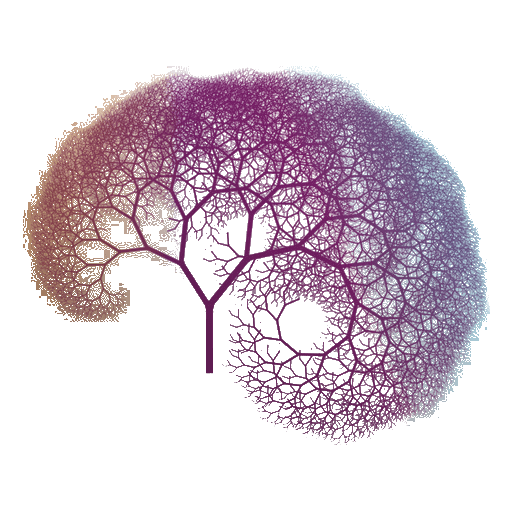Color blindness isn’t the inability to see color; rather, it’s a reduced ability to distinguish between them. This occurs due to issues with the cones in the eye responsible for color perception. Most colorblind individuals still see colors but with varying degrees of difficulty.
Hallucinogens like LSD have long been known to alter perception. For some colorblind individuals, these substances have purportedly triggered experiences where they perceive colors in ways they hadn’t before. The effects seem to vary, and it’s a highly conditional phenomenon.
Scientific investigations into the correlation between color blindness and hallucinogens have been scarce. An older study led by Dr. Alex E. Krill administered LSD to a small group of blind individuals. The findings suggested that only those who had residual vision experienced any hallucinatory effects.
Amid the scientific gaps, anecdotal reports prevail. Individuals on platforms like Erowid claim to have experienced profound changes in color perception under the influence of hallucinogens. However, caution should be exercised as anecdotal evidence lacks scientific rigor.
Accounts of those who are colorblind and have taken hallucinogens narrate fascinating stories. Some describe experiencing a newfound spectrum of colors, distinguishing between hues they couldn’t differentiate. However, others note more psychedelic patterns and intensified existing colors rather than new perceptions. Individuals experimenting with their color perception while under the influence of hallucinogens have conducted self-tests, trying to differentiate colors they previously couldn’t discern. Results, while personal, suggest a broadening of color perception for some.
Perception is inherently subjective, making it challenging to verify if what one person perceives as blue aligns with another’s perception. This complexity further complicates understanding the extent of color enhancement during hallucinogenic experiences.
While anecdotal evidence presents intriguing accounts, these subjective experiences lack controlled conditions and scientific validation. They remain intriguing stories that stimulate curiosity about the interaction between hallucinogens and color perception. The relation between hallucinogenic drugs and color perception in colorblind individuals remains largely unexplored scientifically. Robust studies are essential to elucidate the complexities and potential implications of this fascinating phenomenon.
Perception Amplification and Distortion
Hallucinogenic substances induce vivid visual alterations in perception among individuals with normal color vision. Users often report intensified and distorted colors, an effect known as chromatic enhancement.
Regular individuals under the influence of hallucinogens often experience intensified colors. Colors may appear more vibrant, vivid, and saturated. Furthermore, hallucinogens can provoke the appearance of intricate and dynamic patterns over surfaces and objects.
Hallucinogens can also induce synesthetic experiences, where one sensory perception triggers experiences in another. Some individuals report seeing sounds as colors or feeling colors as tactile sensations, blurring the lines between sensory modalities.
Under the influence of hallucinogens, individuals might struggle to accurately identify or categorize colors. They may perceive familiar colors differently or have difficulty distinguishing between shades, leading to altered color associations.
Hallucinogenic experiences may imbue colors with profound emotional or psychological significance. Certain hues might evoke strong emotions or sensations, fostering a deeper connection between colors and subjective experiences.
Statistics On the Prevalence of Color Blindness
- Research done by Furkidz, dogs do not see the world only in black and white. Research has shown that dogs possess dichromatic vision, allowing them to perceive different shades, especially in the blue and yellow spectrum. Although they may find it challenging to distinguish between red and green, their visual experience is still colorful. The color vision of dogs is often compared to that of a human who experiences red-green color blindness.
- Statistics indicate that color blindness affects about 8% of males and 0.5% of females globally. However, there are variations in the prevalence rates based on geographical locations and demographics.
- The use of hallucinogens varies across different populations. Recent studies suggest that the use of hallucinogenic drugs like LSD, psilocybin, or DMT has been increasing among certain demographics, particularly in controlled therapeutic settings for mental health treatments.
- Research indicates that when individuals with color vision deficiencies take hallucinogenic substances, they may experience altered color perceptions. However, specific statistical data on the extent or frequency of these experiences among color-blind individuals remains limited.
- Studies exploring the psychological or emotional impact of hallucinogens on color-blind individuals suggest that the experiences can vary widely. These experiences often include intensified emotional responses to colors or altered emotional associations with certain hues.
- Due to the ethical considerations and constraints of conducting research involving hallucinogens, especially on individuals with color blindness, there remains a scarcity of comprehensive statistical data on the precise effects of hallucinogenic substances on color perception among color-blind individuals.
- According to Quickie, reading in dim or poorly lit environments can certainly cause eye strain. However, it’s important to note that this does not lead to permanent damage to your eyesight. Similar to how muscles in other parts of the body feel strain, the eyes experience temporary discomfort due to overuse and prolonged tension. Once the eye muscles are given a chance to rest and recover, the symptoms of strain typically diminish and eventually disappear.
Ethical Implications of Studying Color Perception
The debate over conducting studies on color perception involving hallucinogenic drugs among color-blind individuals raises ethical concerns. It questions whether exposing individuals with color vision deficiencies to such substances for research purposes is ethically justifiable or if it breaches ethical boundaries.
Therapeutic Potential for Color Perception Enhancement
The discussion revolves around whether the temporary alteration of color perception through hallucinogens could have therapeutic benefits for individuals with color blindness. It delves into the possibility of using these drugs in controlled therapeutic settings to enhance their color perception or facilitate a better understanding of color nuances.
Variability of Experiences among Color-Blind Individuals
There’s a debate surrounding the diversity of experiences among color-blind individuals when taking hallucinogens. Some argue that the drug’s effects on color perception might vary significantly among different types of color blindness or individual sensitivities, raising questions about the predictability of these experiences.
Safety and Health Risks of Hallucinogen Use
The debate focuses on the potential risks and safety concerns associated with color-blind individuals using hallucinogenic drugs to enhance color perception. Discussions explore whether such drug use poses specific health risks or triggers adverse psychological effects for individuals with color vision deficiencies.
Legal and Regulatory Considerations
This debate concerns the legal and regulatory aspects of conducting studies or advocating the use of hallucinogens to alter color perception in color-blind individuals. It examines whether current legal frameworks encompass considerations for such experimental research or therapeutic applications in this context.
Early Observations and Experiments
The history of color-blind individuals experiencing altered color perception through hallucinogenic drugs dates back to the mid-20th century. Initial anecdotal reports emerged, indicating that certain substances like LSD induced vivid visual experiences among those with color vision deficiencies.
Scientific inquiry into this phenomenon began with limited studies conducted in the 1960s and 1970s. Researchers explored the effects of hallucinogens on individuals with color blindness, aiming to understand alterations in their color perception under the influence of these substances.
Despite sporadic studies and anecdotal evidence, the exploration of color perception alteration in color-blind individuals due to hallucinogens remained largely under-researched. The lack of comprehensive scientific investigations led to ambiguity regarding the extent and consistency of these experiences.
In recent years, renewed interest in hallucinogenic substances and their effects on perception has reignited scientific inquiry. Some contemporary studies have sought to delve deeper into the neurological mechanisms behind altered color perception in color-blind individuals using these drugs.
FAQs
Q: How might hallucinogenic drugs impact color perception for color-blind individuals?
A: Hallucinogens can affect color perception in diverse ways. Some anecdotal reports suggest heightened color perception, but results are not consistent among color-blind individuals.
Q: Should I consult a professional before experimenting with hallucinogenic substances for enhanced color vision?
A: Absolutely. Consulting a healthcare professional or therapist is crucial. Discuss potential risks, medication interactions, and psychological implications of such experiences.
Q: What expectations should I have regarding altered color perception when taking hallucinogens?
A: Approach the experience with realistic expectations. Altered color vision isn’t guaranteed, and the effects of hallucinogens on perception vary significantly.
Q: How can I ensure safety while exploring altered color vision through hallucinogens?
A: Prioritize safety. Create a secure environment with trusted companions. Avoid risky situations and have a sober person available for assistance if needed.
Q: What should I consider for my mental well-being before and after the experience?
A: Be mindful of your psychological state. Hallucinogens can induce intense mental states. Have post-experience support available for emotional well-being.
The realm of hallucinogenic experiences offers a fascinating insight into altered perception. The diverse encounters individuals report, especially those with color vision deficiencies, shed light on the complexities of perception. These encounters might vary significantly, with some individuals noting enhanced color perception, while others may not experience such vivid alterations. The intricacies of these experiences highlight the intriguing relationship between hallucinogens and human perception.

